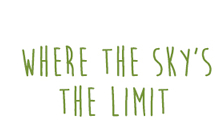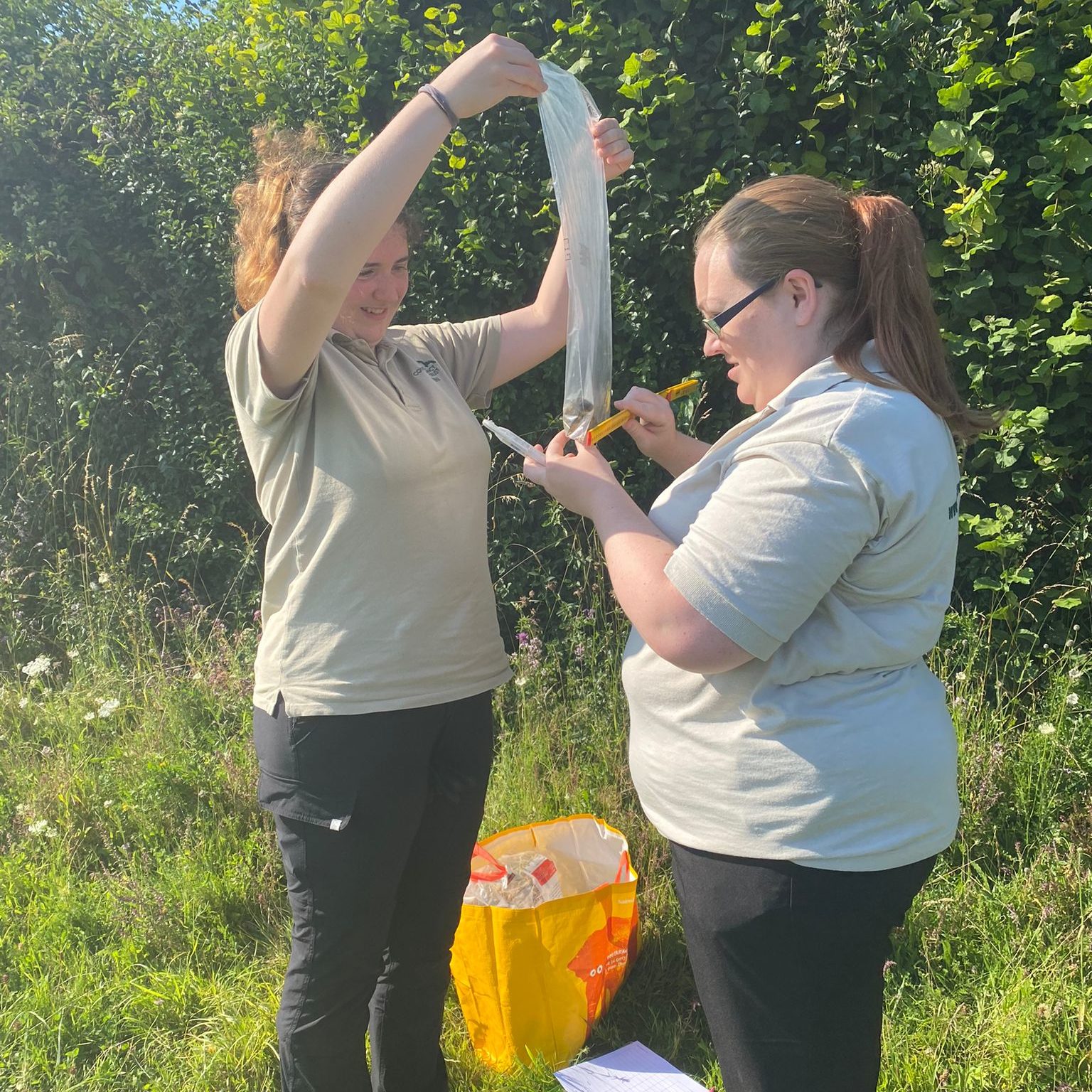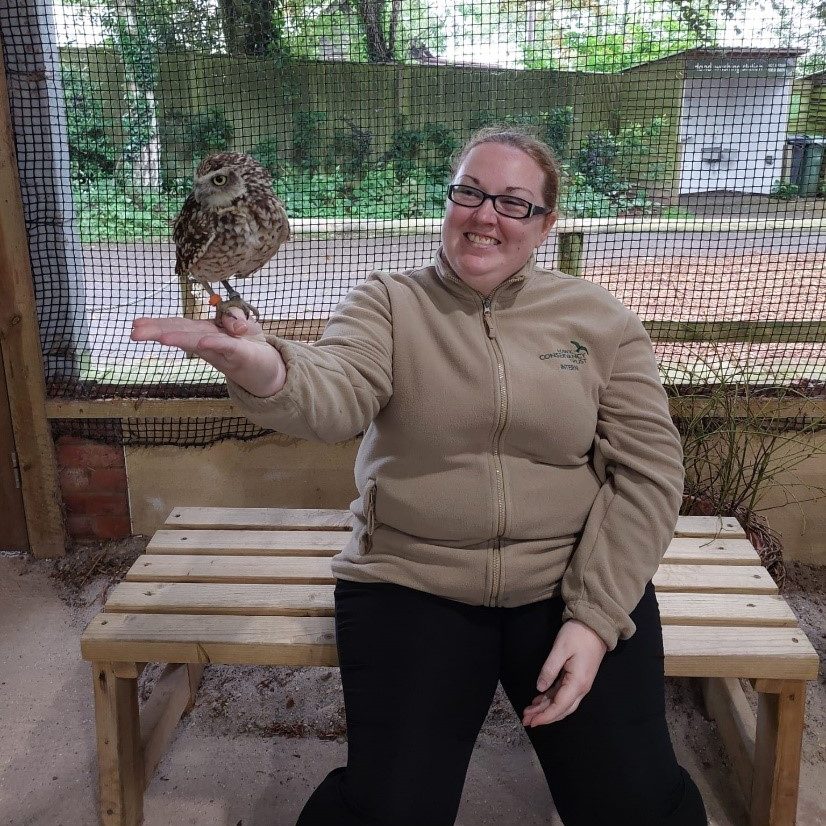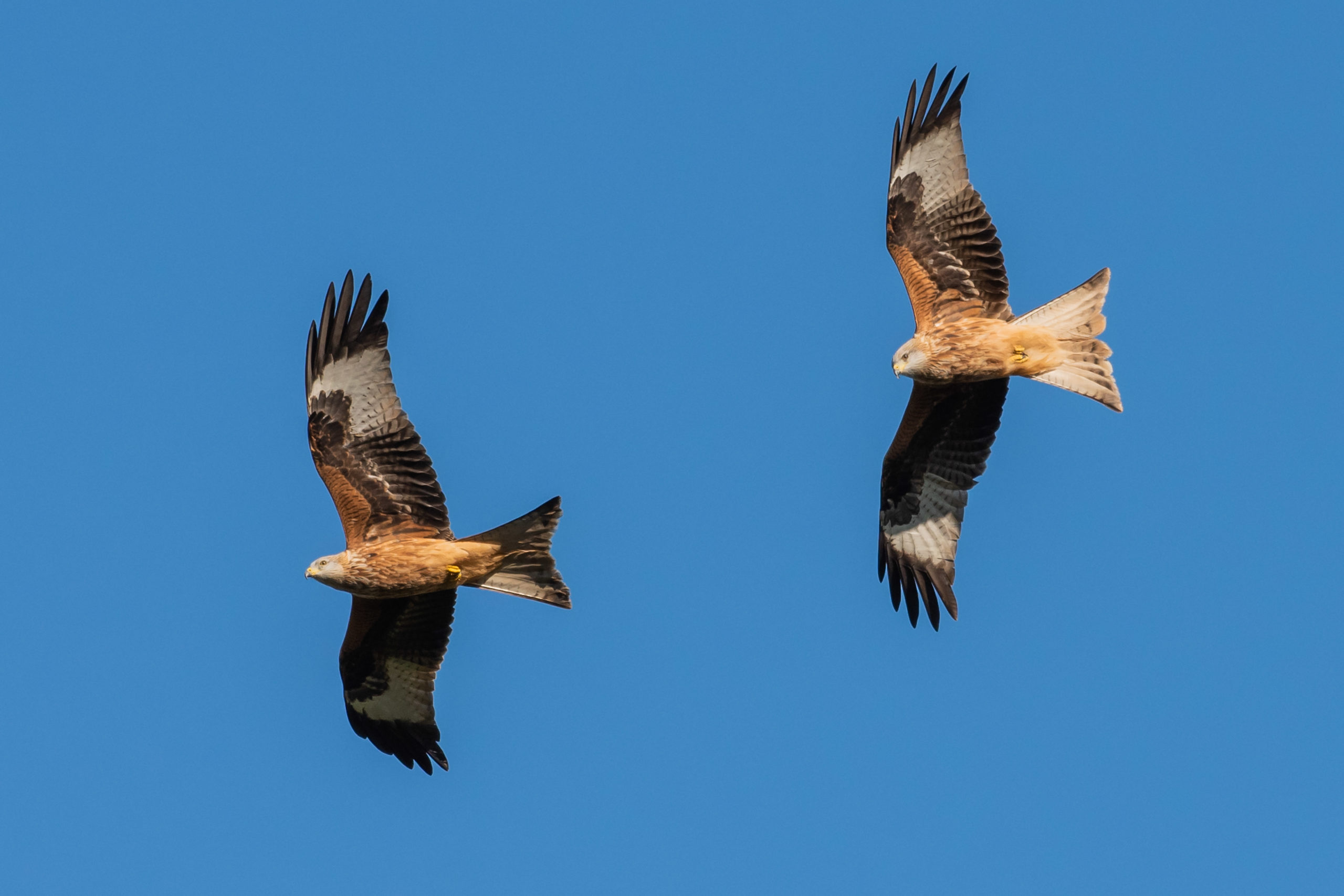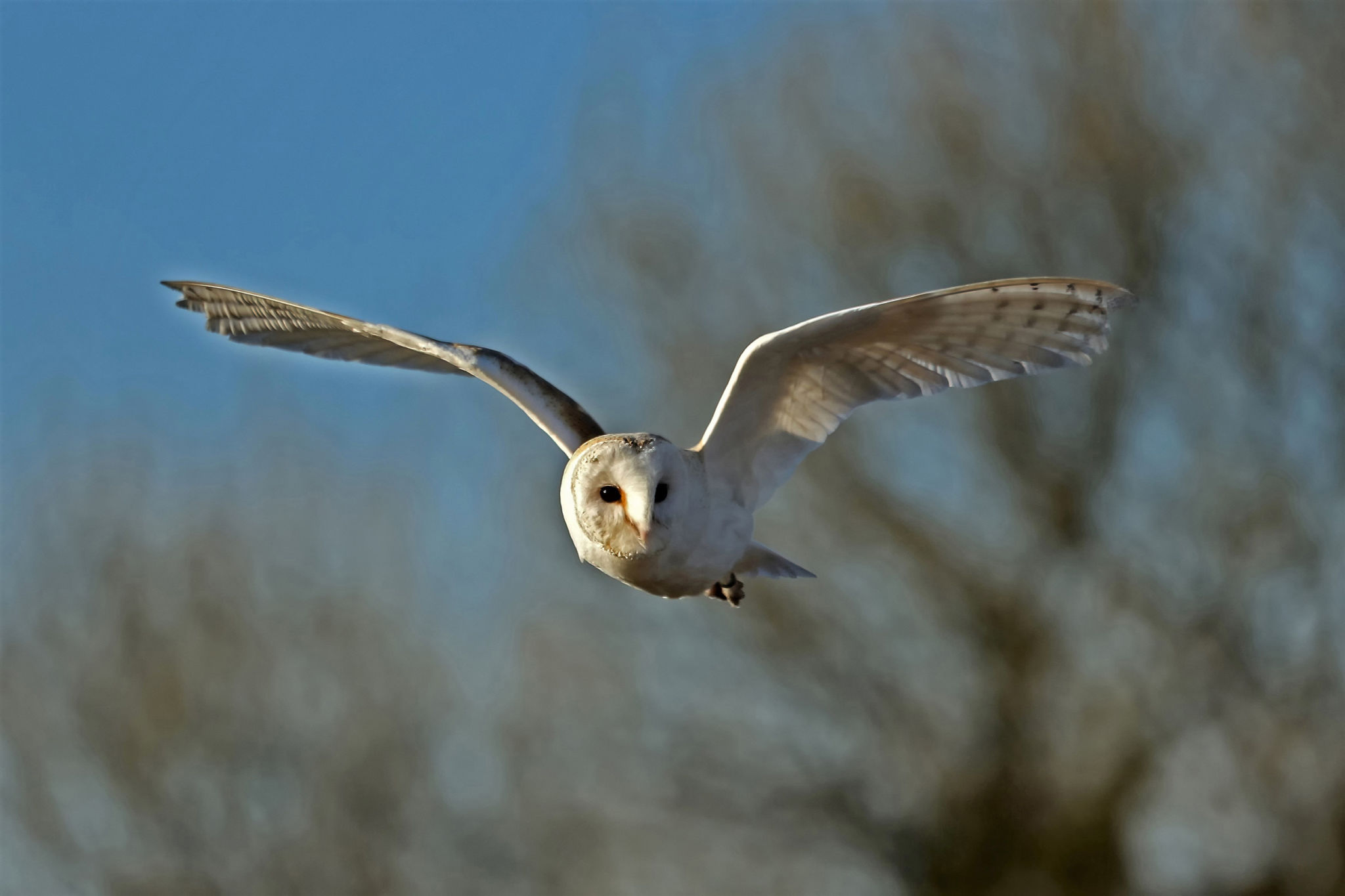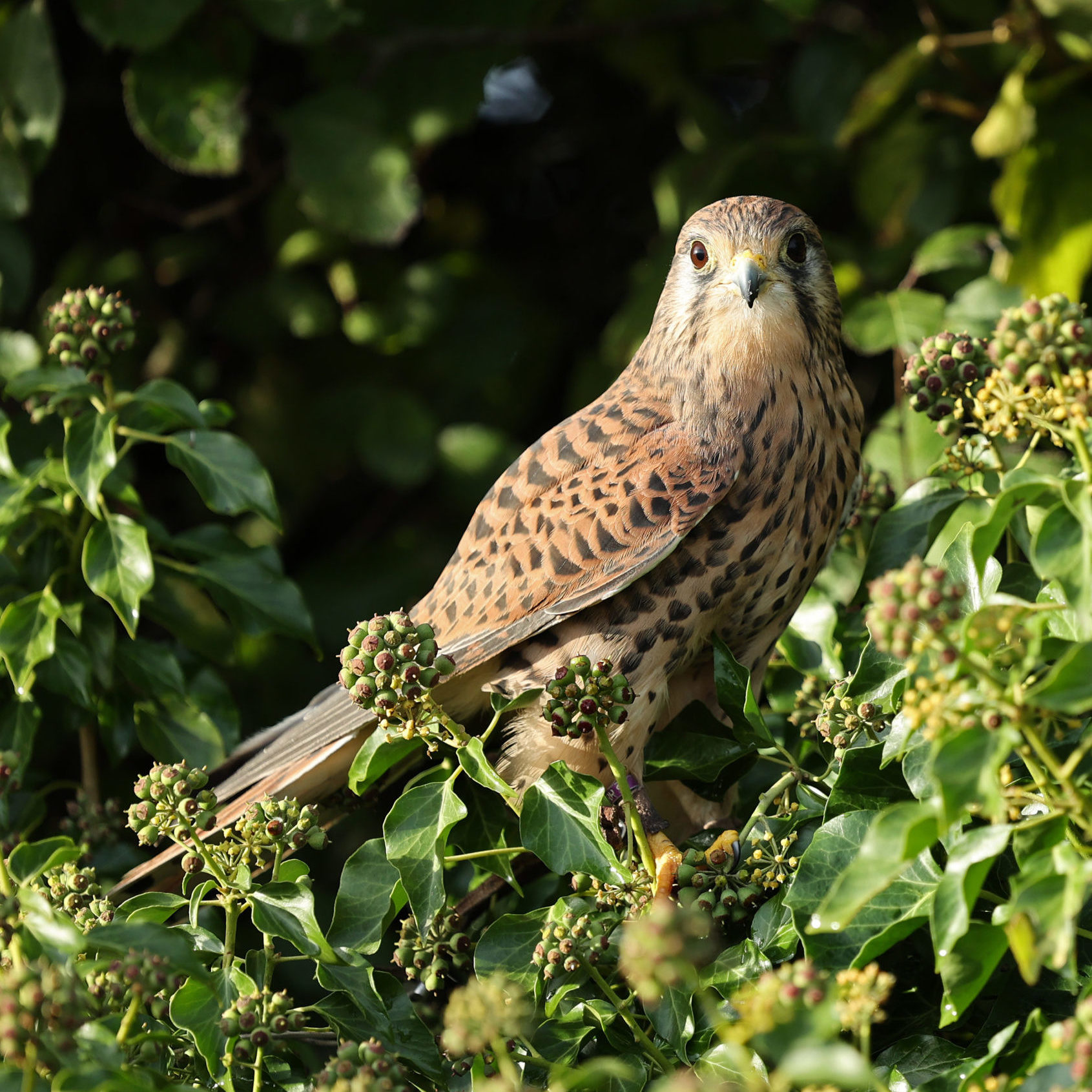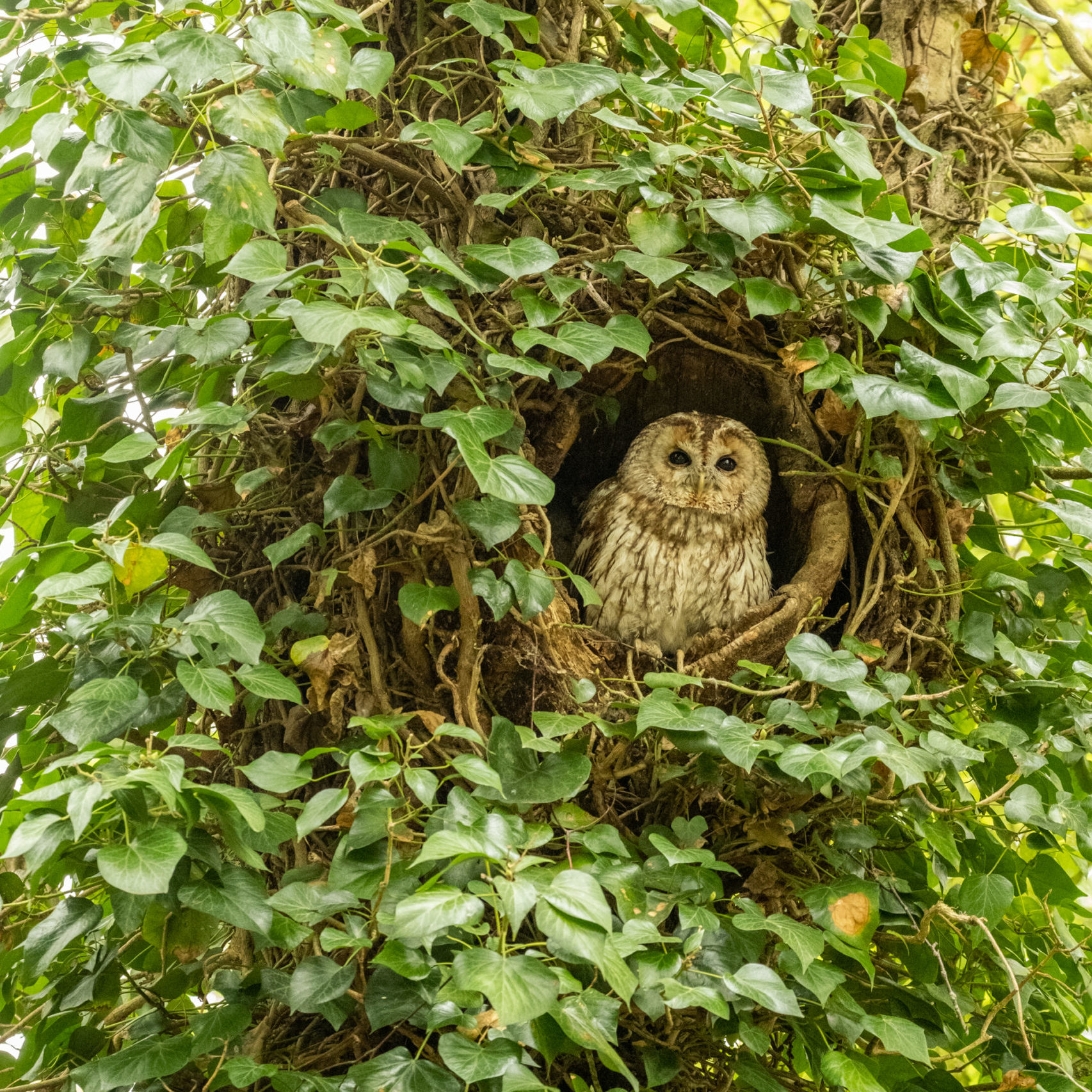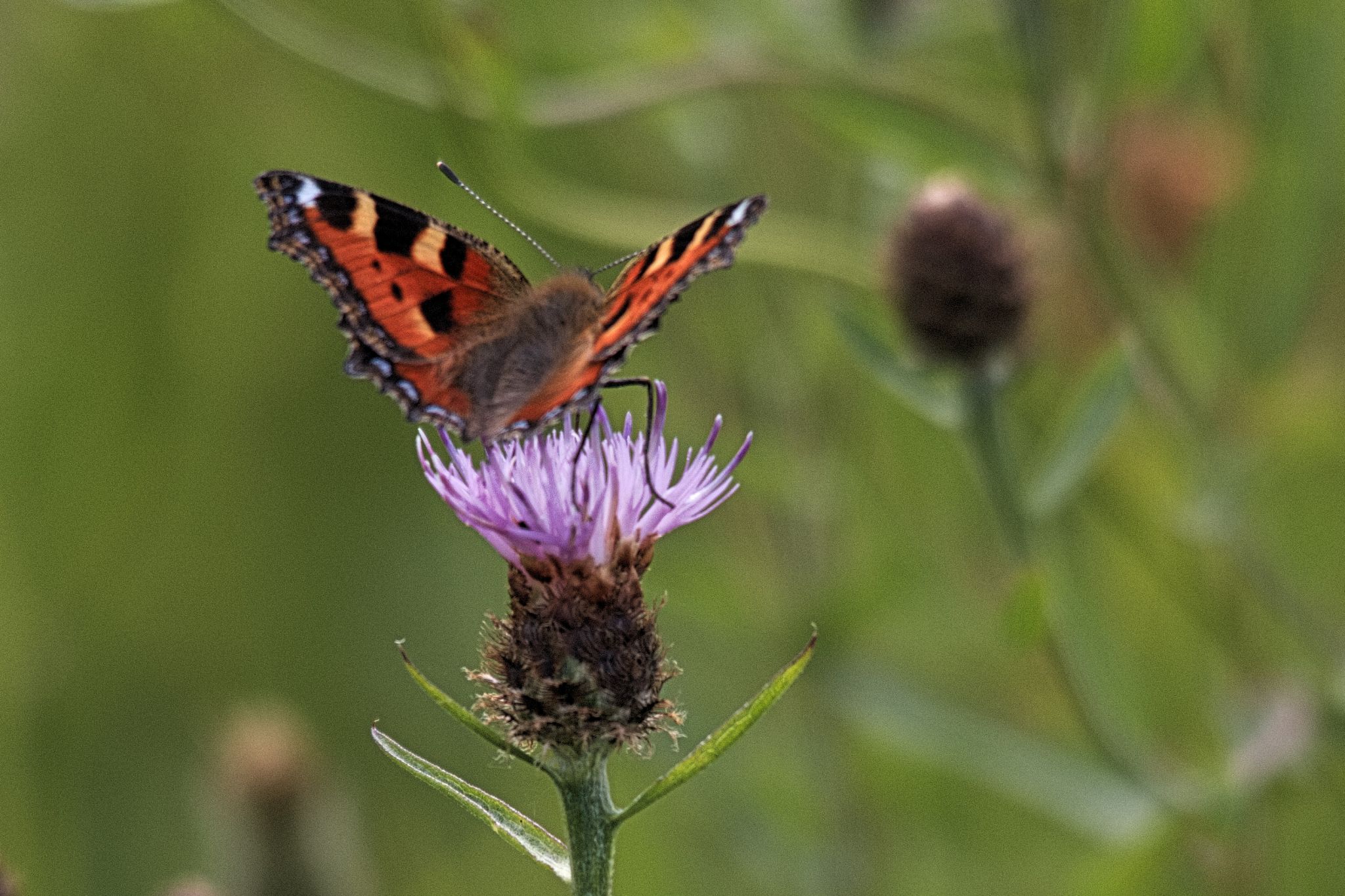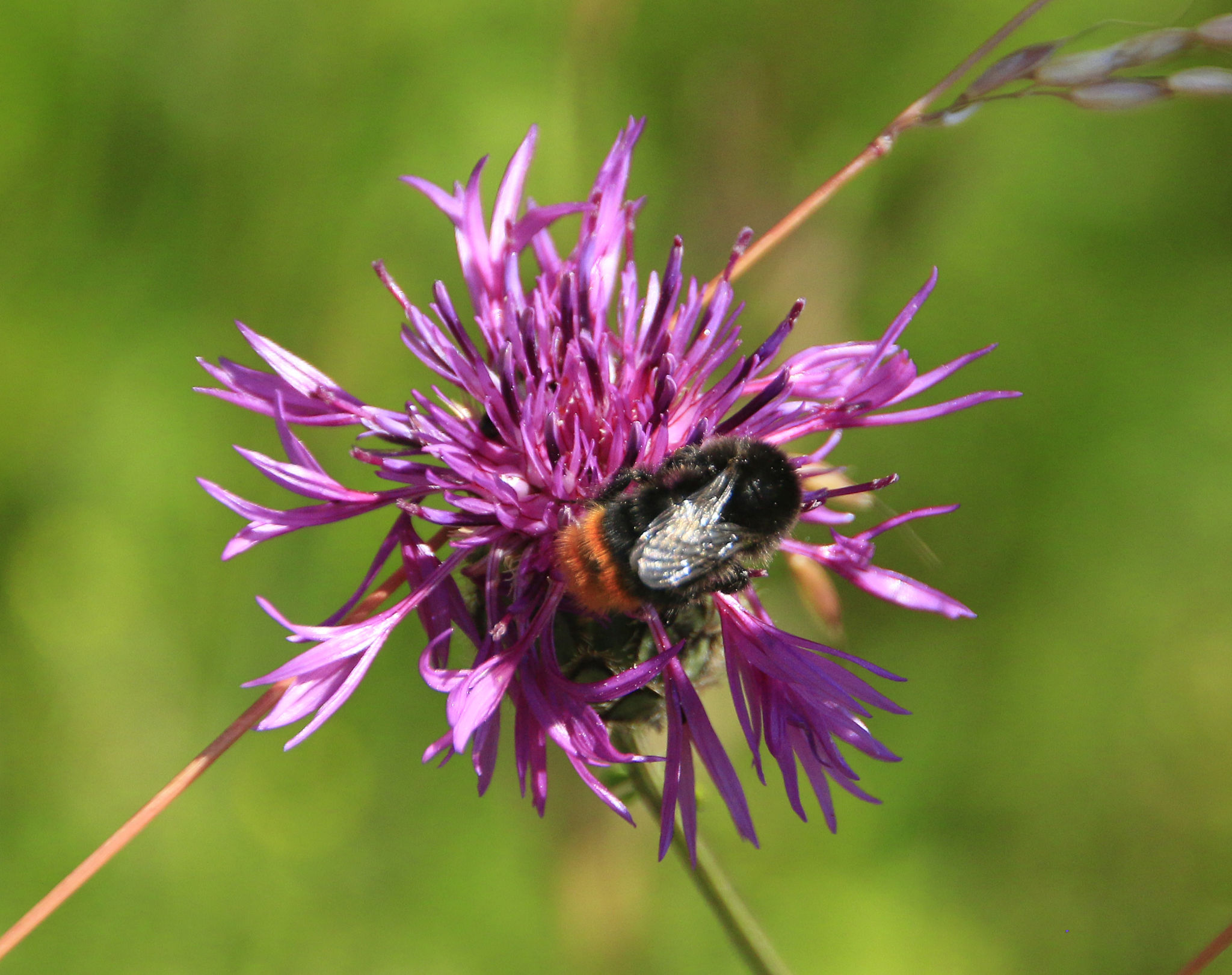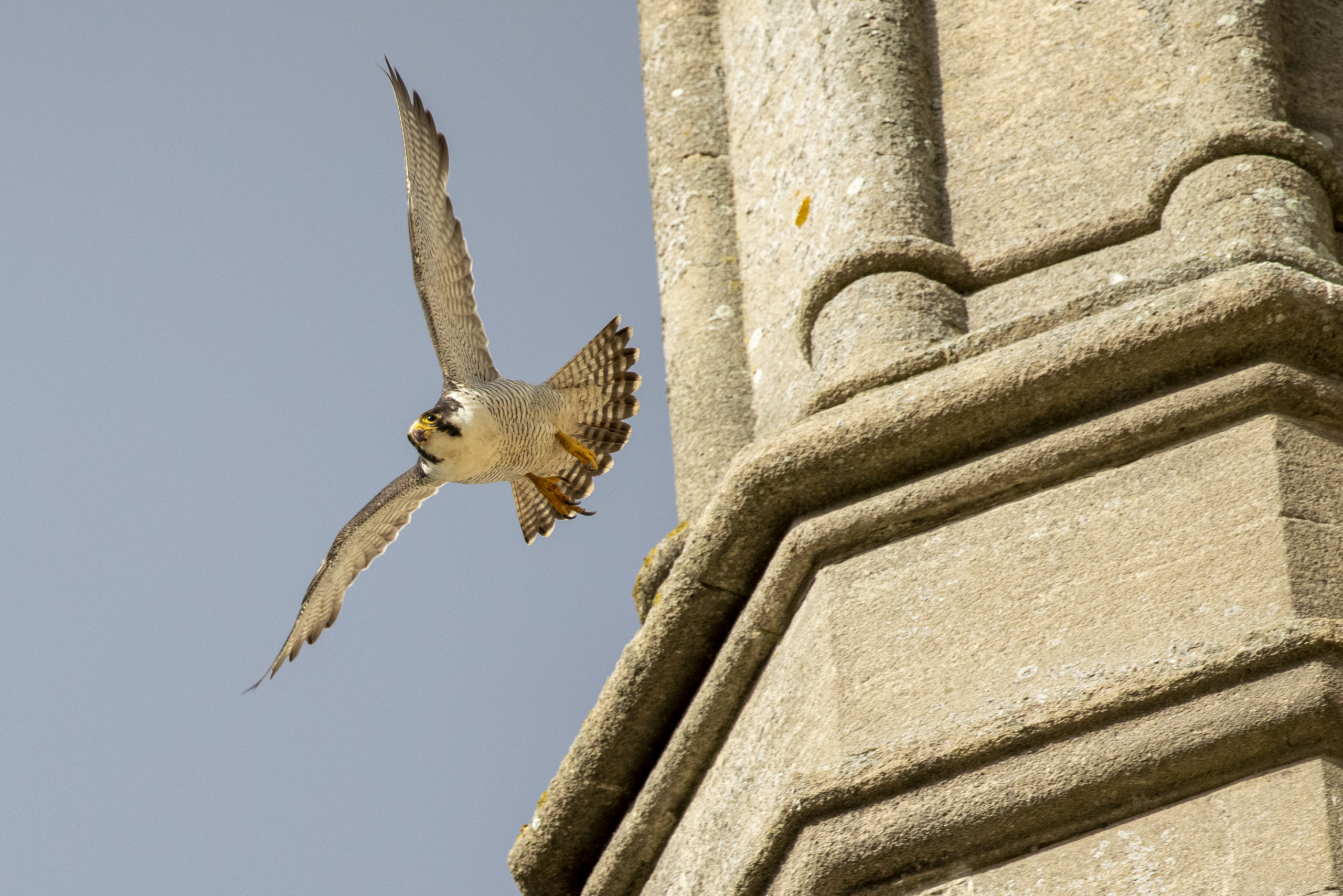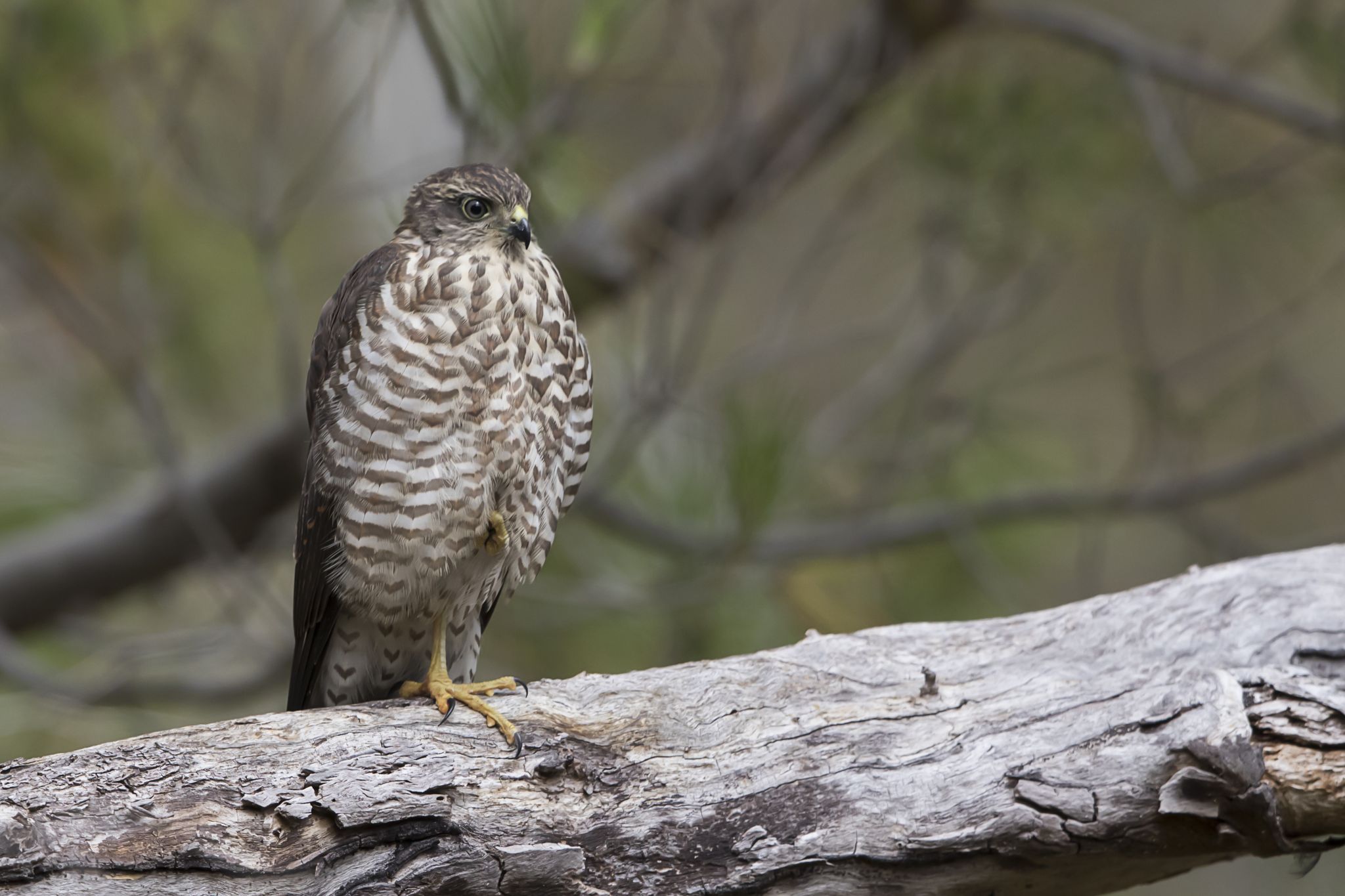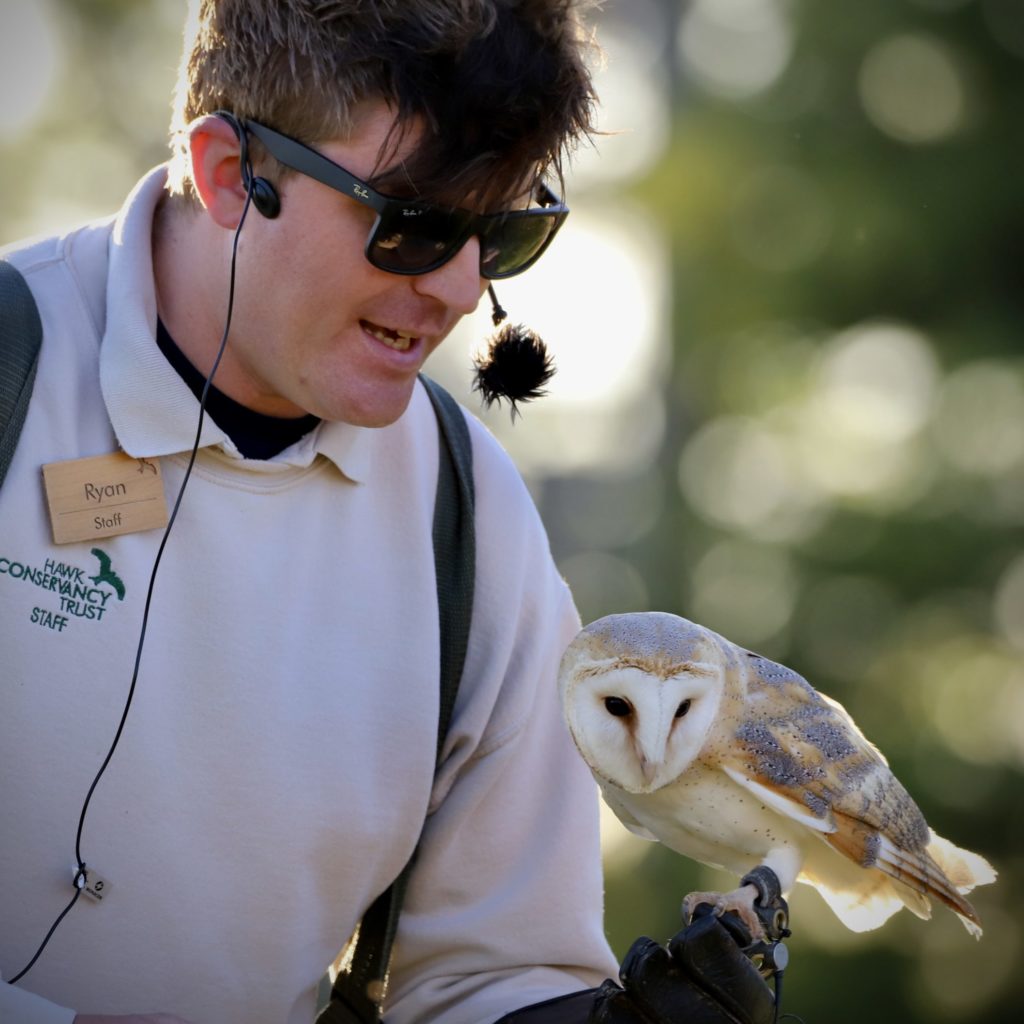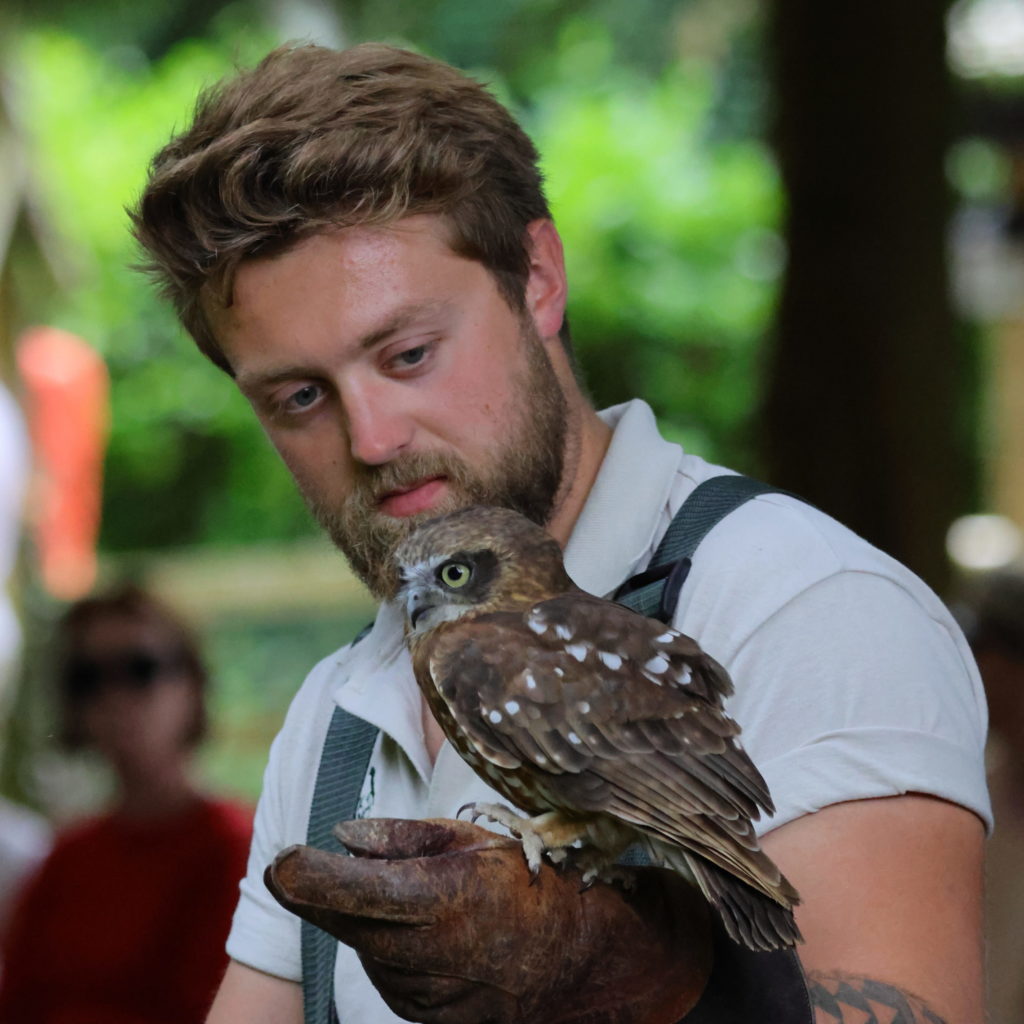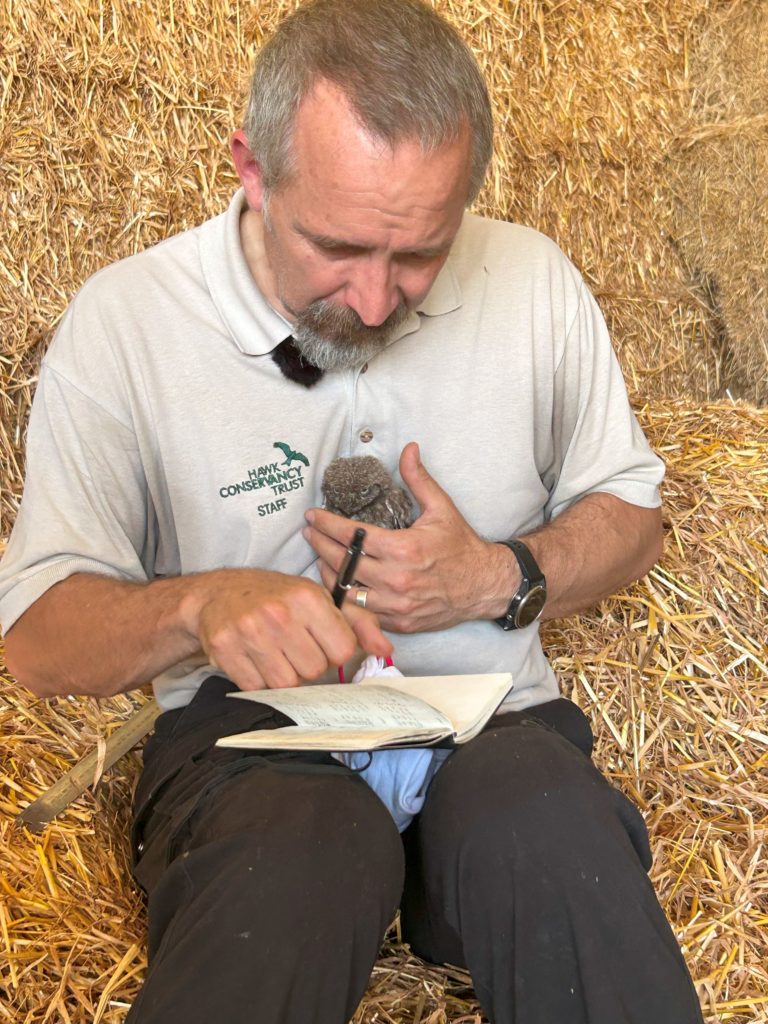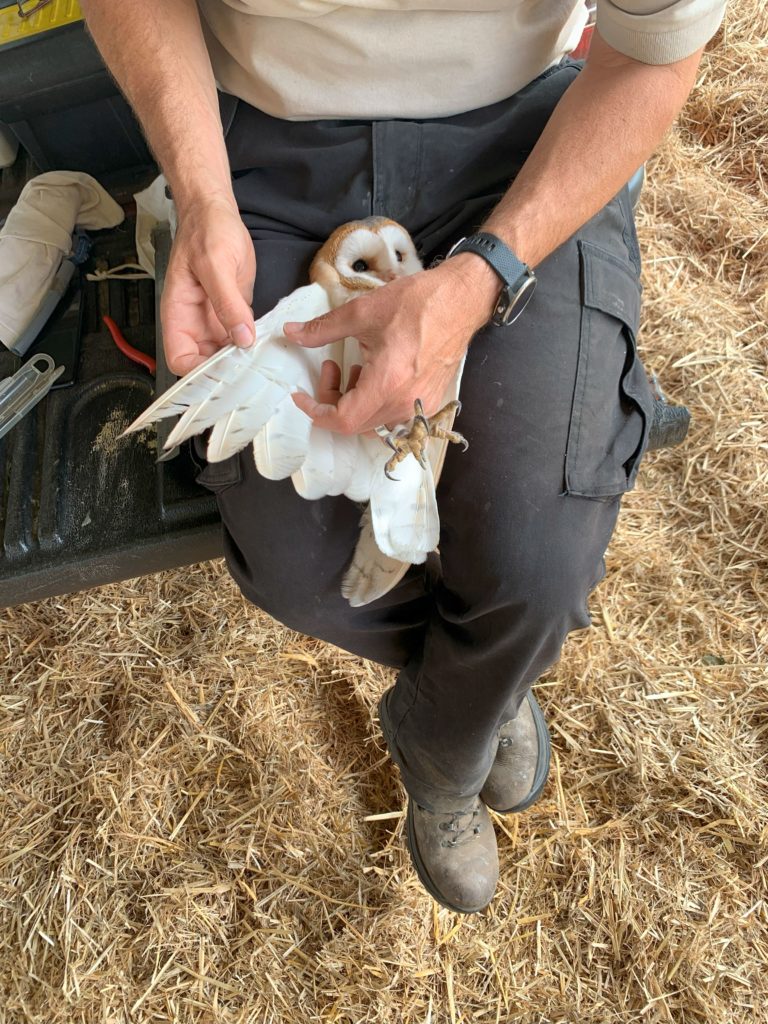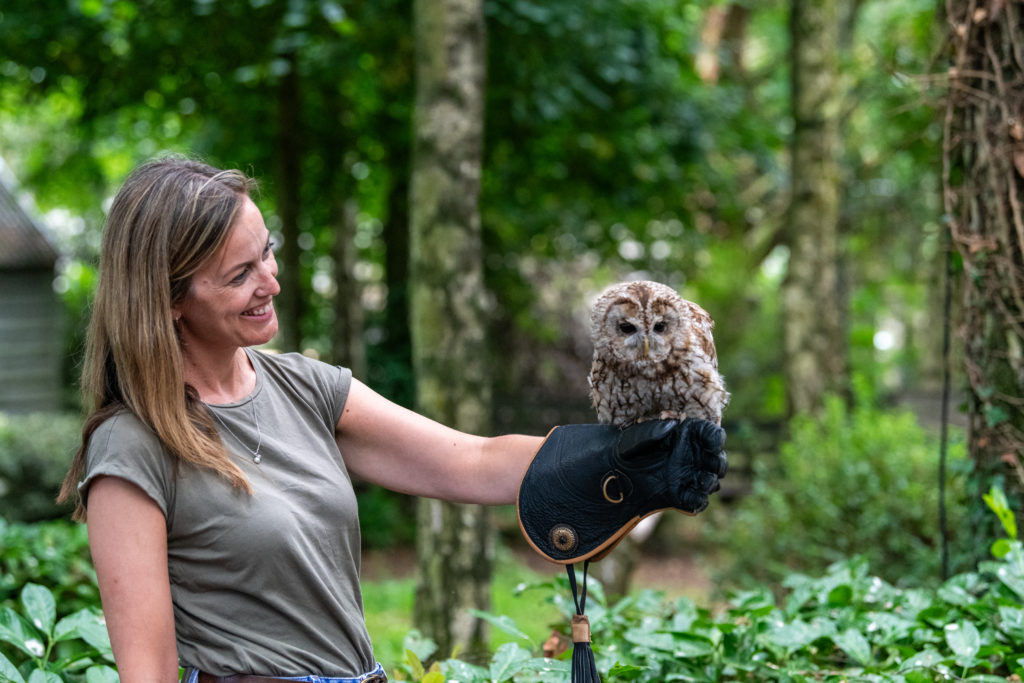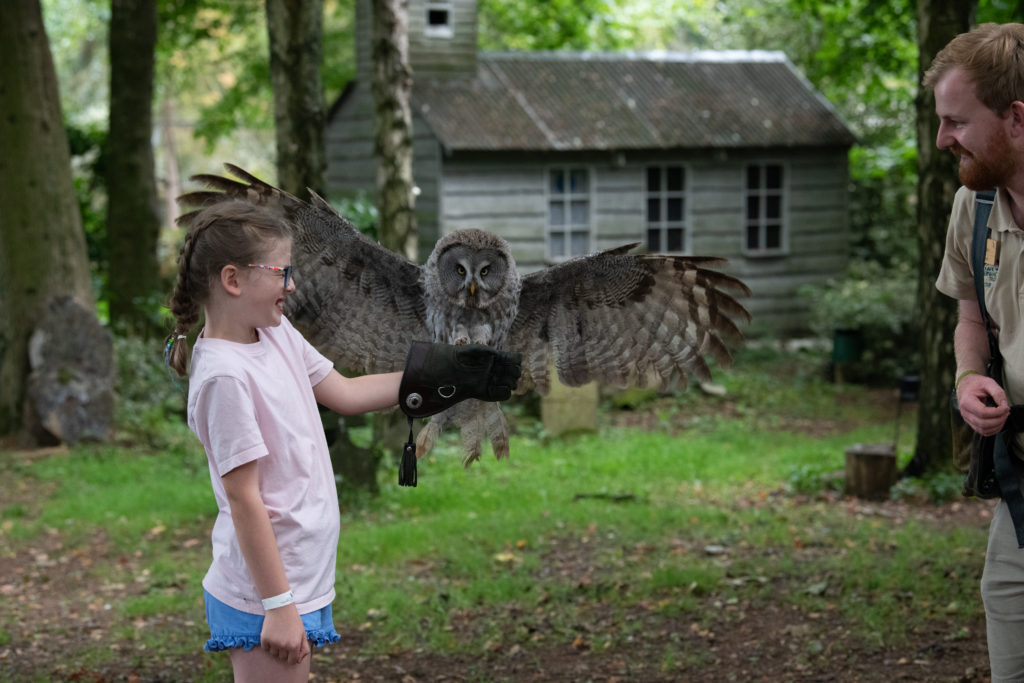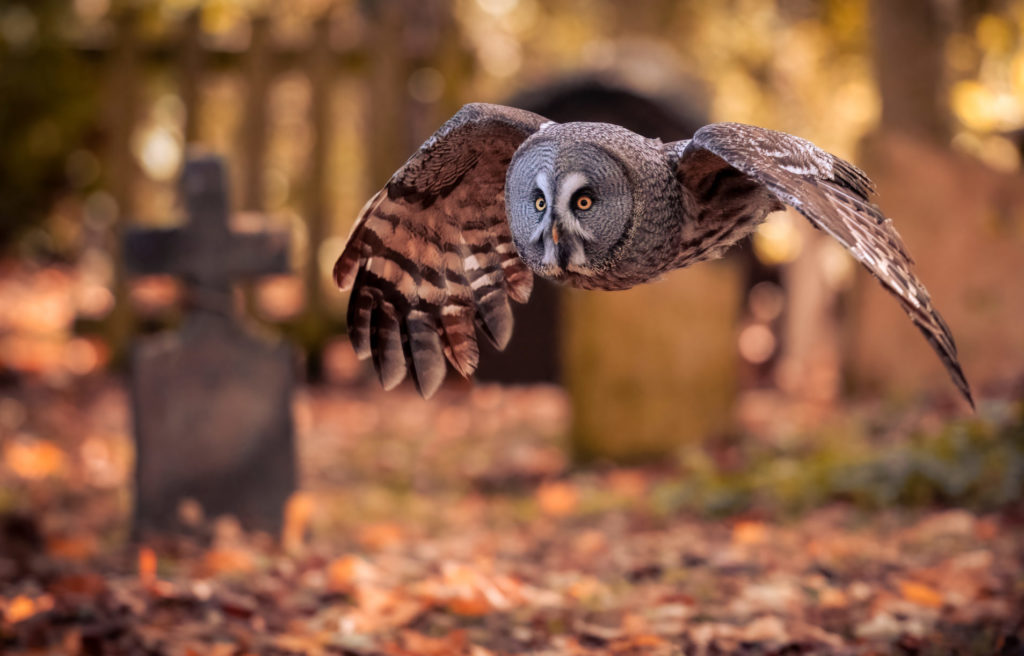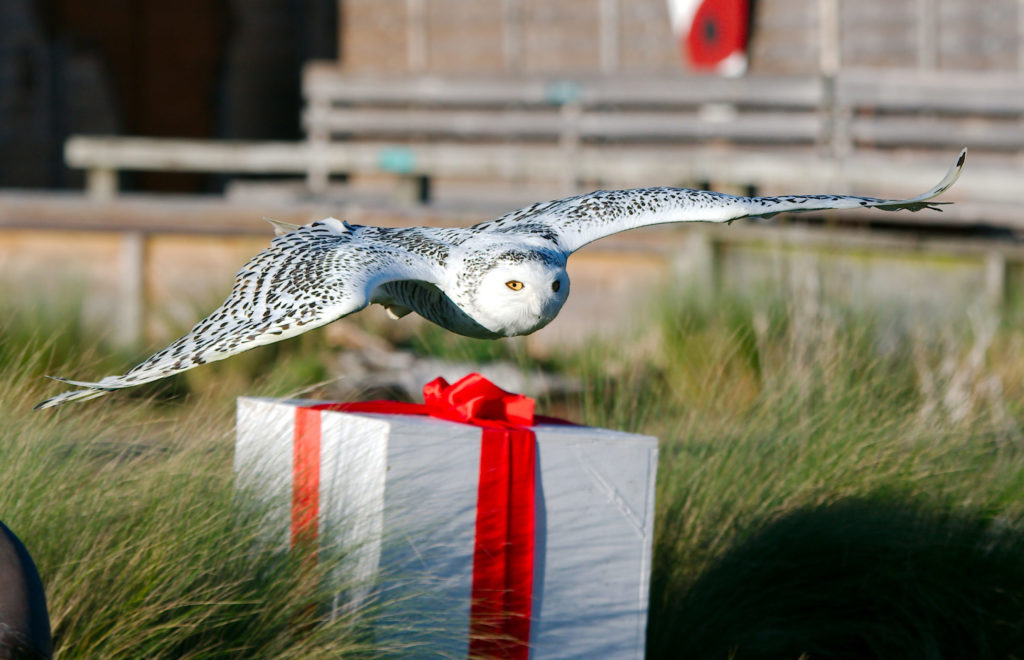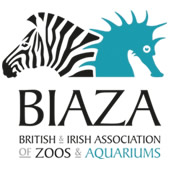If you’ve been to one of our flying displays, checked out our social media channels, or have even just been taking a stroll at the Trust, we’d be surprised if you hadn’t encountered Bird Team member and Events Coordinator Ben Cox. Ben’s no stranger to the spotlight, and we’re sure you’ll agree his passion for birds of prey and conserving them is infectious. We caught up with Ben to hear about a different side to his job – being on camera!
“I am extremely lucky to get to do what I absolutely love every single day of the year. The main part of my job is helping to organise all of the wonderful events we do here around the calendar year, flying birds in displays or experience days, commentating our flying displays, and of course the day-to-day care of our amazing birds. However, I would like to share a little insight into another part of my job which I absolutely adore: creating content for our social media platforms.
We are very fortunate here at the Trust to have a phenomenal team made up of many different departments, who all put in their best efforts for the same goal – the conservation of birds of prey. As part of this team we have a fantastic Marketing Department which, among many things, allows us to have a brilliant social media presence and connect with a wide audience around the world. This is absolutely vital for us as we want to spread our message and mission of conserving birds of prey with as many people as we possibly can. Conservation cannot be done in isolation, and we know we cannot achieve our mission alone. We need lots of other people to help us. This is where our social media platforms like TikTok, Instagram and Facebook are so important for helping to connect with people everywhere.
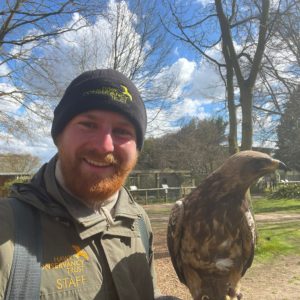
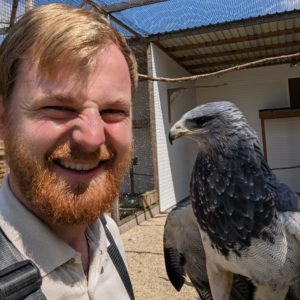
We want to inspire people into falling in love with birds of prey. Creating content that showcases our birds in the best light is so important to us, as they are the true stars of everything we do. Now it would be no secret to say that even from a young age, I’ve always loved being in front of a camera! So it really is an absolute privilege to share what I love to do with millions of people around the world: promoting birds of prey and educating about the threats they face at every opportunity. I love to share my passion for these amazing animals – they are all just so different and have their own personalities that shine through in our videos and photos.
Although we plan what content we’d like to create, we have found that sometimes the spontaneous moments captured on camera are the best! Recently we have had a video of Angola, our Secretary Bird, and myself that we shared on TikTok go viral. The video is currently sitting at thirteen and a half million views! This has been absolutely mind blowing – some here at the Trust have even given me a new nickname…the “TikTok Sensation”. This situation is a very good example of how powerful social media can be. Through this one video, which is no more than 30 seconds I might add, we have connected with over thirteen million people who have now hopefully discovered our mission and been inspired to help us conserve birds of prey all around the world.
It is a very rewarding feeling indeed, and it’s such a fun part of the job. When you start to film a video with the birds you never quite know what antics they might get up to, which makes it so exciting. I absolutely adore going through all the outtakes I’ve taken over the years – as you can imagine there are rarely one-take-wonders when filming with the birds!
I would like to take this opportunity to thank all of you who follow and support us on our social media platforms. It is very much appreciated by all of us here at the Trust, especially the birds we work with, and those that we are doing all we can to conserve in the wild. If you are not following any of our social media then why not?! Get started now; get regular updates on our birds, see sneak peeks and behind the scenes footage all about we are getting up to here at the Trust, and hear about our conservation work all around the world.
Social media is also a fantastic education tool, where you can be inspired by these magnificent birds and discover so many new things that you never knew before. One of my favourite videos to film for social media is our weekly “Friday Fact” – bite-sized facts about a different species of bird of prey every single week. We learn new things every day, so why not join us to find out something new about birds of prey every week?
Keep an eye out for us and I promise we will continue to share our passion about birds of prey with you!”

